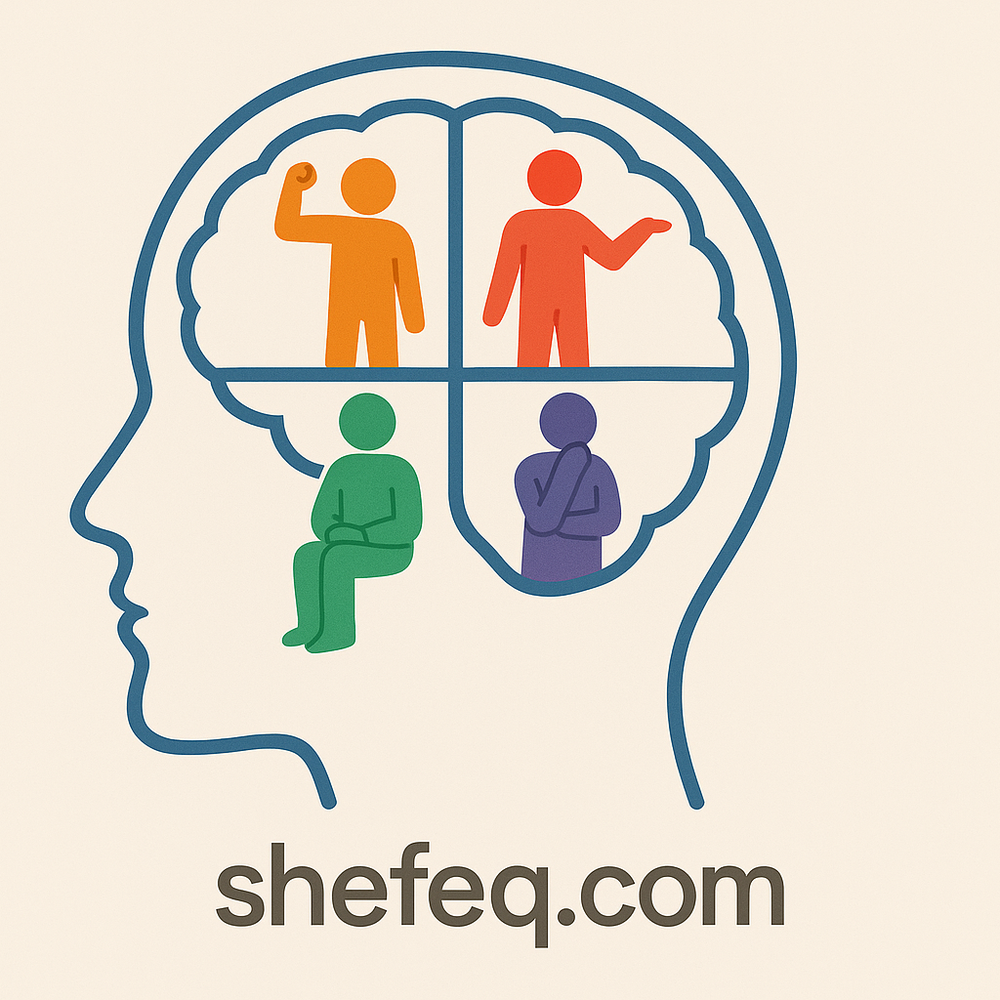PERSONALITY TYPES AND LIFESTYLES
INTRODUCTION: One body, a million thoughts
The human body is the same — eyes, heart, brain, blood vessels… But everyone is different. Even two children raised in the same household can display completely different personalities. People studying at the same school and raised with the same values can make entirely different life choices. But why?
This question has intrigued philosophers, scientists, and psychologists for centuries. In this article, we will explore what personality is, why people are different, the main personality types, how they influence lifestyle, the genetic and social roots of personality, and how self-awareness impacts quality of life.
CHAPTER I: What is Personality?
1.1. Definition and origins
Personality is the set of internal and stable traits that determine how a person perceives the world, communicates with others, and lives their life. These traits include:
-
Thought patterns
-
Emotional reactions
-
Interests and preferences
-
Willpower
-
Behavioral models
The Latin word persona means "mask." In ancient theater, actors used masks to represent roles. Over time, the term came to represent not a person’s true face, but the "role" shown to society.
CHAPTER II: Why Are People Different?
2.1. Genetic code – inborn identity
Genes play a crucial role in shaping personality. Traits like irritability, calmness, dynamism, or pessimism can be partially inherited.
Studies on twins show that individuals with identical genetic makeups tend to show similar psychological tendencies — even if raised in different families.
2.2. Environment – written destinies
-
Family relationships
-
School and teachers
-
Circle of friends
-
Societal values
-
Successes and failures
All of these shape character. So personality is both inborn and developed.
2.3. Natural and learned behaviors
For example, a child might be naturally very active, but if constantly silenced by their environment, they may develop into a more passive and fearful person.
CHAPTER III: Personality Types – How Are People Categorized?
3.1. Hippocrates and the four temperaments
The oldest personality classification comes from Hippocrates:
-
Sanguine – cheerful, sociable, outgoing
-
Choleric – irritable, energetic, leadership-oriented
-
Phlegmatic – calm, balanced, reflective
-
Melancholic – sensitive, analytical, shy
3.2. Myers-Briggs Type Indicator (MBTI)
According to this system, there are 16 distinct personality types, based on 4 main dichotomies:
-
Extraversion (E) vs. Introversion (I)
-
Sensing (S) vs. Intuition (N)
-
Thinking (T) vs. Feeling (F)
-
Judging (J) vs. Perceiving (P)
Examples:
INFJ – an idealistic and thoughtful leader
ESTP – an adventurous and pragmatic doer
3.3. Enneagram System
This model includes 9 core personality types:
-
The Reformer
-
The Helper
-
The Achiever
-
The Individualist
-
The Investigator
-
The Loyalist
-
The Enthusiast
-
The Challenger
-
The Peacemaker
Each type may have a "wing" — additional traits from neighboring types.
CHAPTER IV: How Does Personality Influence Lifestyle?
4.1. Career and job preferences
People with leadership qualities often feel more comfortable in roles like manager, teacher, or doctor.
Creative individuals tend to express themselves through writing, design, or music.
4.2. Personality in relationships
Extraverts may fall in love quickly but can struggle with introverts who have communication difficulties.
People with high empathy form deeper and more stable relationships.
4.3. Coping with stress
Some relieve stress by talking, others withdraw in silence.
Psychological resilience defines whether one “breaks down or endures” under pressure.
CHAPTER V: Self-Knowledge – The Greatest Power
5.1. Knowing your strengths and weaknesses
Every person has a winner and a vulnerable self within. Knowing one’s strengths and accepting weaknesses is the core of personal growth.
5.2. Self-awareness = healthier life
A self-aware person knows what job, environment, or relationship suits them.
Someone who lacks self-awareness tries to fit into others’ lives — which leads to emotional exhaustion.
5.3. Psychotherapy and personality analysis
Today, psychology offers various tests and therapeutic approaches to help people understand their personality:
-
MBTI test
-
Enneagram
-
Big Five Personality Model
CONCLUSION: Difference Is Not Weakness, But Beauty
The fact that people are different is not a problem — it’s the color of life. The world isn’t a place where one color dominates, but a palette where each shade has value.
Some of us think, some of us feel.
Some speak, others write.
Yet all of us — in our own way — are essential pieces of this world.
In the end:
Don’t compare yourself to others.
Because you’re not “someone else.”
You are — you.
Question & Feedback
Which personality type do you identify with?
Do you see yourself more as a thinker, a feeler, a leader, or a quiet observer?
Do you think people are born different, or does life make them so?
Share your thoughts with us — because every opinion is a voice of a personality.

